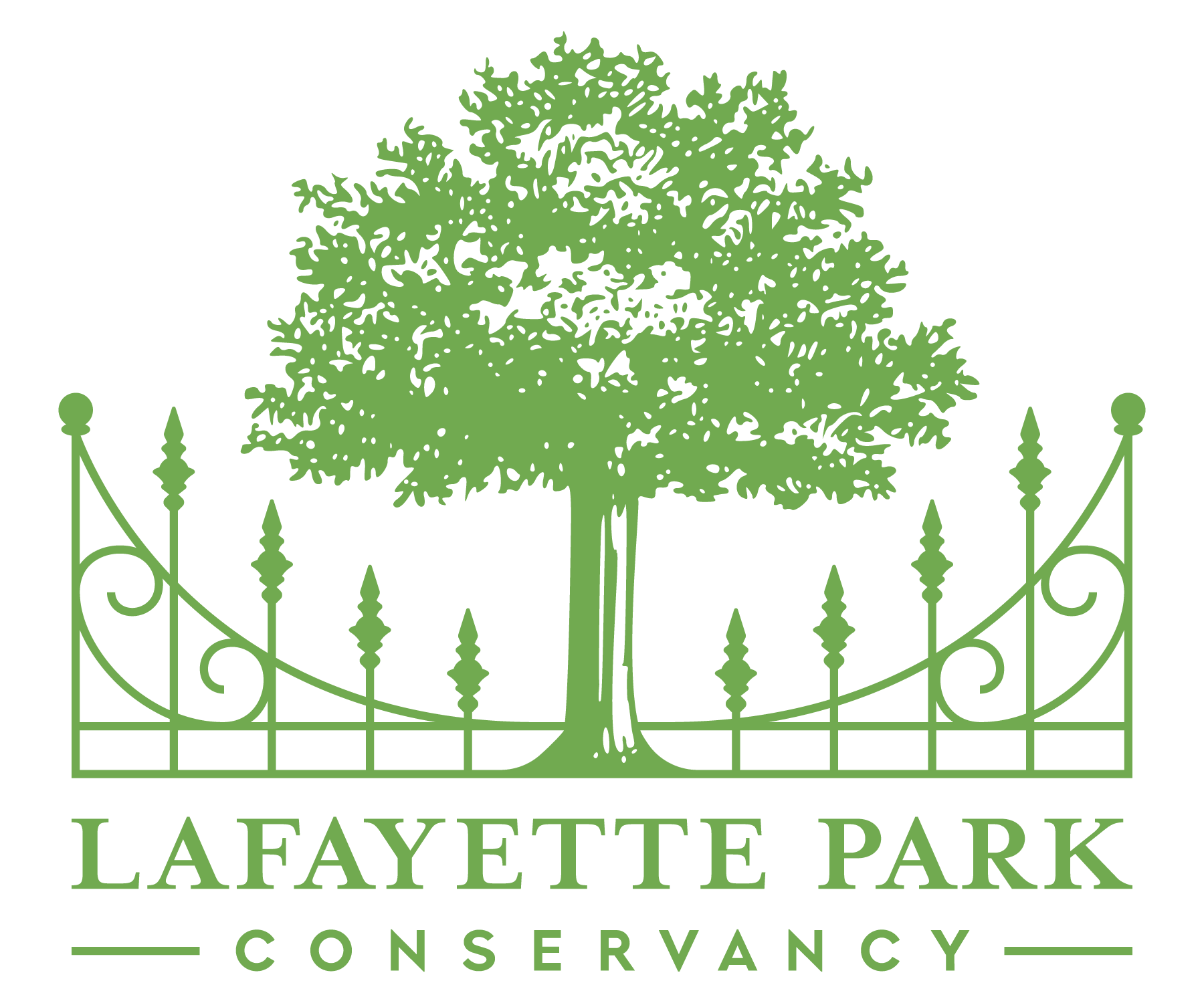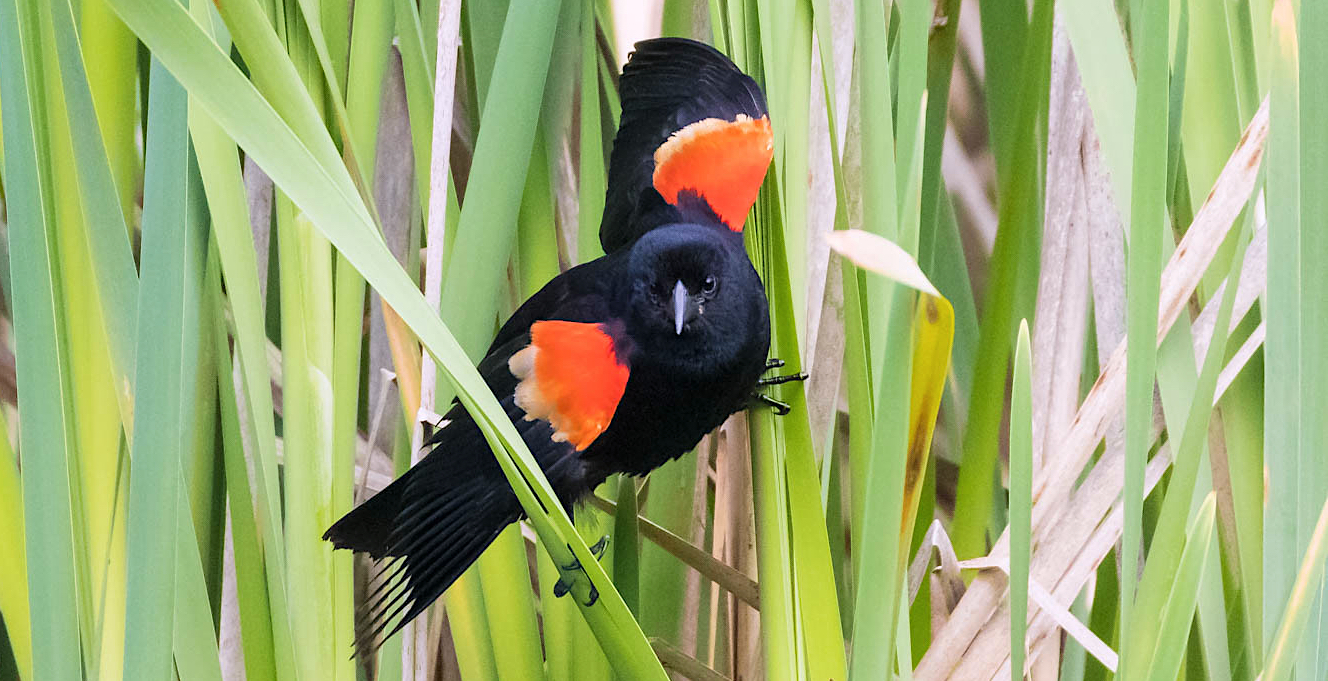BY KIERAN LINDSEY, PhD
“He sure does have a chip on his shoulder!” That statement is a metaphor…
… except when it isn’t. Taken literally, this idiom for describing someone looking for a fight may also refer to the ornamental insignia on a military uniform, or the poppy red and sunflower yellow feathers of Red-winged Blackbirds (Agelaius phoeniceus).
Like those decorative armed services stripes, the blackbird’s epaulets are an indication of rank. A status symbol. But the chip trope is applicable for this chirper as well, since the male RWB is known to hawkishly protect his territory against predators and competitors…

… except when he doesn’t (more on that in a few minutes).

The RWB is similar in size to the American robin, measuring 6½ — 9 in (17-23 cm) from the fine-point nib beak to slightly flared tail. The aforementioned stop-and-yield color badges (which appear to be on the shoulders when the bird is at rest but are actually on the leading edges of the forearms) and glossy jet plumage make this an easy-to-identify species…
…except when it isn’t, either because the individual is a male who isn’t wearing his breeding apparel (and is, therefore, decidedly less inky, shiny, vibrant, and recognizable)…

…or because the individual is a she and not a he. Female RWBs wear less conspicuous shades of khaki, taupe, saddle, and sand, with subtle salmon staining on the wings and face that grows more vivid as they matures.

RWBs can be found year-round in all but the northernmost tier of U.S. states, as well as the westernmost coast of Canada, parts of Mexico, and into Central America, and their range expands during the breeding season to include most of Canada and some pockets of habitat in Alaska.
They’re known to occupy primarily rural landscapes, nesting in both soggy plots — freshwater wetlands or saltwater marshes are equally acceptable — and drier upland grasslands, agricultural fields, and pastures…

…except when they don’t. The species has become progressively suburban and urban. RWBs are one of the most abundant bird species on the continent and, as population numbers grew, the pressure to move into the built environment increased accordingly. For those who are able to adapt, metropolitan areas do offer a few advantages — for example, while farmers disparage these granivores for eating into profits, and take measures to deter them, city-folk have proven to be far more hospitable!

It might come as a surprise, since many female birds chose a mate based on her suitor’s ostentatious wardrobe and flamboyant dance moves, that female RWBs aren’t all that into looks. Ever pragmatic, these gals pick a baby-daddy by choosing a good neighborhood.
So that explains why these guys are adamant about defending their domain against all comers, including much larger creatures such as horses and humans, am I right? Depending on the size and quality of their empire, a red-winged fella may claim conjugal rights to a harem of 5—15 consorts…
…except not really, or at least not exclusively. DNA testing by meddlesome ornithologists reveals that 25—50% of RWB nestlings are not the biological offspring of the male who holds the deed to their nursery. Talk about awkward…

…except that it isn’t, actually. If the males know the mistresses are engaged in some quid pro quo, they aren’t saying and don’t take it out on the kids. RWBs guys are vigilant sentries who tirelessly watch over and protect every brood within their perimeter…
… except when the sun sinks at the end of the day and he clocks out to join the lads at their communal roost. The same bros he’ll chase away if they come to call during daylight hours, mind you. And in winter, the lasses and youngsters join the dads in flocks that may number in the millions. Its all one big happy family…

… except when it isn’t.


